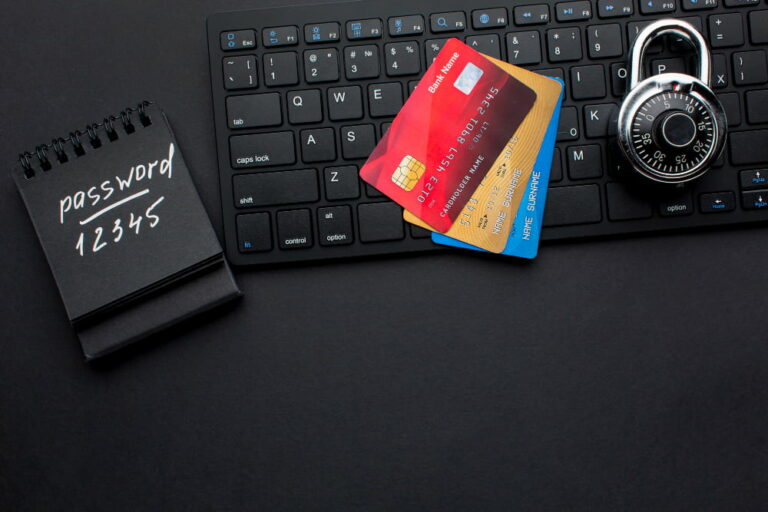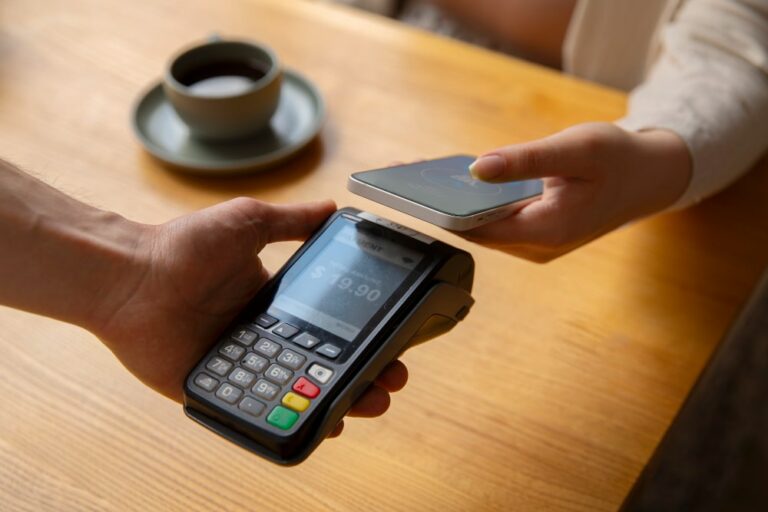In a world that’s rapidly evolving towards cashless transactions and digital financial solutions, Peer-to-Peer (P2P) payment apps have emerged as game-changers. These versatile tools have transformed the way we handle money, offering unprecedented convenience and efficiency. Whether you’re splitting a dinner bill with friends, reimbursing a colleague for a coffee run, or paying the rent, P2P payment apps provide a quick and hassle-free way to transfer funds. However, like all innovations, they come with their own set of advantages and drawbacks.
In this exploration of the pros and cons of P2P payment apps, we delve deep into the heart of these digital marvels. We’ll dissect the many benefits they bring to our financial lives, from their user-friendly interfaces to the lightning-fast transactions that bridge geographical gaps. Yet, we won’t shy away from shining a light on the potential pitfalls – concerns over security, privacy, and the ever-present threat of scams. As we navigate this digital landscape, we aim to provide you with valuable insights to make informed decisions about integrating P2P payment apps into your financial routine. So, buckle up as we embark on a journey through the world of P2P payments, uncovering the gems and pitfalls along the way.
The Advantages of P2P Payment Apps:
First, let’s explore the bright side of P2P payment apps, where convenience reigns supreme. These apps have virtually eliminated the need for physical cash and checks. In an era when time is a precious commodity, the ability to send money with just a few taps on your smartphone is a game-changer. Whether you’re settling debts among friends, reimbursing family members, or making quick payments to service providers, P2P apps like Venmo, PayPal, and Cash App make these transactions a breeze.
Speed is another standout feature. Traditional bank transfers could take hours or even days to process, especially if you’re sending money across borders. P2P payment apps, on the other hand, facilitate real-time or near-instantaneous transfers. Need to split a bill with a friend at a restaurant? No problem – just send your share using the app, and it’s done before the waiter brings the check. Such immediacy has made P2P payment apps invaluable in situations where time sensitivity is critical.
Moreover, these apps boast widespread acceptance and availability. Unlike some niche payment solutions that are limited to specific merchants or regions, P2P payment apps are generally accepted by a wide range of individuals, businesses, and online platforms. This universality means you can use the same app for various transactions, from paying for groceries at a local store to contributing your share of the rent to your roommate.
Security is another aspect where P2P payment apps shine. Many of these platforms employ robust encryption and security measures to protect your financial data. Features like PINs, biometrics (such as fingerprint or facial recognition), and two-factor authentication (2FA) add layers of protection to your accounts. Additionally, transaction histories provide a transparent record of your financial activities, helping you stay on top of your money management.
Lastly, the ability to split bills and handle group payments seamlessly is a noteworthy perk. Whether it’s divvying up expenses after a weekend getaway with friends or collecting funds for a group gift, P2P payment apps simplify the process. No more awkward cash exchanges or chasing down friends for their share – just create a group and settle the costs effortlessly.
The Disadvantages of P2P Payment Apps:
While P2P payment apps offer undeniable advantages, they are not without their challenges and drawbacks. Privacy and security concerns often top the list of worries for users. With digital transactions come the risks of data breaches, identity theft, and scams. Users must exercise caution and ensure they’re using a reputable and secure app to avoid falling victim to cybercriminals.
Transaction fees and limits are another aspect to consider. While many P2P apps offer free transfers for standard transactions, they may impose fees for expedited transfers or business-related transactions. Additionally, there are usually limits on how much money you can send or receive within a specified time frame. Users looking to transfer large sums may find these limits restrictive.
The potential for fraud and scams is a genuine concern in the world of P2P payments. Scammers have devised cunning schemes to exploit users, from posing as sellers of nonexistent goods to tricking individuals into sending money for fabricated emergencies. Staying vigilant and verifying the identity of recipients is crucial to avoid falling victim to these scams.
Limited international functionality can also be a downside, especially for users who need to make cross-border payments. While some P2P apps offer international transfers, they may involve additional fees and longer processing times compared to specialized international money transfer services.
Lastly, P2P payment apps are dependent on smartphones and internet connectivity. This reliance on technology means that users without access to a smartphone or a stable internet connection may face challenges in adopting these digital payment methods. Additionally, there is a learning curve for older generations or individuals less comfortable with technology.
As we navigate this digital landscape, we aim to provide you with valuable insights to make informed decisions about integrating P2P payment apps into your financial routine. So, buckle up as we embark on a journey through the world of P2P payments, uncovering the gems and pitfalls along the way
Comparison with Traditional Payment Methods:
To truly understand the significance of P2P payment apps, it’s essential to contrast them with traditional payment methods such as cash, checks, and bank transfers. Here, we delve into the advantages and disadvantages of both approaches:
Advantages of P2P Payment Apps Over Traditional Methods:
Speed and Convenience: P2P payment apps offer unmatched speed and convenience. While traditional methods like writing a check or making a bank transfer may involve paperwork, waiting times, and physical visits to financial institutions, P2P apps allow you to complete transactions in mere seconds, anytime, and anywhere.
Real-Time Transactions: Traditional bank transfers often take hours or days to process, particularly for international transfers. P2P payment apps, on the other hand, facilitate real-time or near-instantaneous transactions, eliminating the frustrating delays associated with traditional methods.
Accessibility: P2P payment apps are highly accessible. All you need is a smartphone and an internet connection, making them a practical choice for individuals who may not have easy access to physical bank branches or ATMs.
Widespread Acceptance: P2P apps are widely accepted by individuals, businesses, and online platforms. Whether you’re splitting a dinner bill, paying a freelance worker, or shopping online, you’ll likely find P2P payment as an available option, ensuring you can handle various transactions with a single app.
Enhanced Security: P2P payment apps prioritize security. Features like PINs, biometrics, and transaction history provide transparency and protection against unauthorized access and fraud, making them arguably more secure than carrying physical cash or writing checks.
Advantages of Traditional Methods Over P2P Payment Apps:
Anonymity: Traditional cash transactions offer a level of anonymity that P2P apps may not provide. When you pay with cash, there’s no digital trail, whereas P2P transactions are recorded in-app.
No Dependency on Technology: Traditional methods do not rely on smartphones or internet connectivity. This makes them accessible to individuals who may not have access to advanced technology.
No Transaction Fees: While some P2P apps charge fees for expedited transfers or business transactions, traditional methods like cash and personal checks typically do not incur transaction fees.
No Limitations: Traditional methods do not have the same transaction limits imposed by P2P apps. This can be advantageous for individuals needing to transfer significant sums of money.
Wide Acceptance Globally: In some regions and countries, traditional payment methods such as cash are still more widely accepted than digital alternatives, especially in remote or less developed areas.
By comparing P2P payment apps with traditional methods, we can see that while digital solutions excel in terms of speed, convenience, and security, traditional methods maintain advantages related to anonymity, accessibility, and the absence of transaction fees. Understanding these distinctions helps individuals make informed choices based on their specific needs and circumstances.
Tips for Secure and Responsible P2P Usage:
While P2P payment apps offer a host of benefits, ensuring secure and responsible usage is paramount. Here are some valuable tips to help you make the most of these apps while safeguarding your financial well-being:
1. Choose a Reputable P2P App:
- Start by selecting a well-established and reputable P2P payment app. Research user reviews, security features, and customer support to make an informed choice.
- Best Practices: Opt for apps with strong encryption, multi-factor authentication (MFA), and a history of responsive customer service.
2. Set Up Security Features:
- Activate security features provided by the app, such as PINs, biometrics (fingerprint or facial recognition), or two-factor authentication (2FA).
- Best Practices: Use a unique PIN, password, or biometric information for your P2P app. Enable 2FA to add an extra layer of protection to your account.
3. Be Cautious with Personal Information:
- Avoid sharing excessive personal information when transacting with others. Stick to using usernames or email addresses instead of revealing phone numbers or sensitive data.
- Best Practices: Use privacy settings offered by the app to limit the information visible to others. Only share personal details with trusted contacts.
4. Verify Recipients Before Sending Money:
- Always double-check the recipient’s details before initiating a transfer. Accidental transfers to the wrong recipient can be challenging to reverse.
- Best Practices: Confirm the recipient’s username, email address, or phone number. If in doubt, ask them to confirm their details before proceeding.
5. Monitor Transactions Closely:
- Regularly review your transaction history within the app to spot any unauthorized or suspicious activity.
- Best Practices: Set up transaction notifications or alerts to receive immediate notifications of any outgoing or incoming payments.
6. Educate Yourself about Common Scams:
- Familiarize yourself with common P2P payment scams, such as fake goods sales or advance-fee frauds.
- Best Practices: Stay informed about the latest scams and fraud tactics. P2P app providers often publish guides to help users recognize and avoid scams.
7. Keep Software Updated:
- Ensure your P2P app is running the latest version by regularly updating it. App updates often include security enhancements.
- Best Practices: Enable automatic app updates on your device to stay protected with the latest security patches.
8. Use Strong, Unique Passwords:
- If your P2P app requires a password, use a strong and unique one that’s different from your other accounts.
- Best Practices: Consider using a reputable password manager to generate and store complex passwords securely.
9. Be Wary of Unsolicited Requests:
- Avoid accepting unsolicited payment requests or offers from unknown users. Scammers often use this tactic to trick users.
- Best Practices: Only accept payments from individuals or businesses you trust or have a legitimate transaction with.
10. Report Suspicious Activity
If you suspect any fraudulent or suspicious activity, report it immediately to your P2P app provider and, if necessary, to law enforcement. – Best Practices: Keep records of any suspicious messages or transactions as evidence for reporting and potential investigations.
By following these tips, you can navigate the world of P2P payments with confidence, enjoying the convenience and efficiency these apps offer while safeguarding your financial security and privacy. Responsible usage and vigilance are your best allies in making the most of this digital payment revolution.




